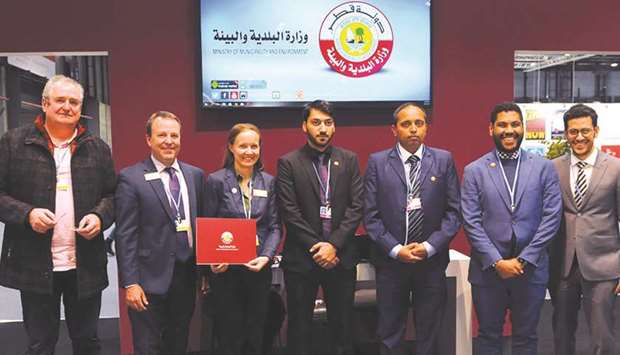
The Ministry of Municipality and Environment (MME) has presented an event, ‘Technology to meet climate change challenges and creating value from CO2’, on the sidelines of the ongoing UN Climate Change Conference COP25 in Madrid, Spain.
At the event, speakers showcased innovative low-carbon technologies used in various industries, from sports and food to aviation and construction, discussing how the further deployment of these technologies could contribute to a climate-friendly future.
Mohamed Omar al-Bader, from the MME’s Climate Change Department, moderated the event, highlighting Qatar’s national planning that balances environmental protection with development goals.
Reminding participants that the country is set to host the 2022 FIFA World Cup, Shashi Prakash from the Supreme Committee for Delivery & Legacy (SC) spoke about sustainable cooling technology at the Qatar 2022 stadiums.
He stressed that Qatar is committed to hosting a sustainable, secure event, and described the distances between the stadium sites as well as the transportation infrastructure in place to host the event.
He spoke about the stadium repurposing plans after the event and also drew attention to the SC’s sustainability plan, including a gender support network to promote the football skills of girls, a worker welfare programme and an innovation and entrepreneurship platform for economic and human
development, among others.
Prakash highlighted that 2022 will see a carbon-neutral World Cup to be achieved in part through raising awareness in companies, schools and at the local level, and through rolling out a greenhouse gas (GHG) inventory. Stating that the design of the stadiums will reduce energy demand, he noted that cooling technologies will be targeted to individual seats and at the pitch, and not the entire space.
Mohamed Ibrahim al-Marzooqi from the Qatar Civil Aviation Authority (QCAA) spoke about mitigating climate change in the aviation industry in Qatar, noting that the industry supports over 65mn jobs worldwide. He said Qatar’s aviation industry is set to grow, noting that it is the second-most competitive
economy in the region.
He underlined the need for the Qatar Civil Aviation Authority to continue with its mitigation efforts, adding, however, that the global aviation industry and, in turn, carbon emissions, are
expected to grow.
Al-Marzooqi also discussed climate-friendly technologies to decrease emissions, including the use of newer aircraft, and pointed to even more fuel-efficient aircraft designs in the pipeline. He outlined the roadmap for zero-carbon growth in aviation, including through retrofitting aircraft and improving airports, and informed participants that the QCAA has an action plan for reducing CO2 emissions.
In a discussion, the participants considered the “sun quality” during the FIFA World Cup in Qatar in 2022; the type of renewable energy used in the FIFA World Cup stadiums; the potential to use solar cookers to further lower carbon emissions; and the suitability of various solar cookers
for different cooking needs.
Kolja Kuse, CleanCarbon Technology, spoke on environment-friendly solutions to carbon fibres. He noted that these fibres can be made using algal oil mixed with granite, and described a new material called CarbonFiberStone (CFS), a combination of carbon and granite, which could replace steel,
aluminium and concrete.
He highlighted that this material is already being used to make, among other things, cooking hobs, pillars and beams, which have proven to be lighter and more durable than those made of concrete. Further, he noted that CFS could also be used in solar panels to replace aluminium, which is less durable.
He said the “answer to climate change” could be in using these disruptive technologies in the construction industry, noting that CFS can be deconstructed through carbon capture and storage.
Caitlyn Hughes (executive director) and Alan Bigelow of Solar Cookers International (SCI) presented on solar cookers, stressing that they do not manufacture these cookers, but provide support services to solar cooker manufacturers.
Bigelow described how solar cooking converts light to heat using a box oven, which harnesses energy from the sun, noting that the most common cookers use parabolic reflectors. He reported large-scale use of the cookers in India, using solar-to-steam cooking systems to make food for up to 50,000 people per day.
Hughes highlighted the benefits of solar cooking, including no GHG emissions, a reduction in respiratory illnesses that are caused by smoke inhalation, and a reduction in deforestation for household use.
Hughes described the SCI’s work, noting that it manages the world’s largest online database on solar cooking and that solar cookers have reduced carbon emissions by 27mn tonnes. She also called on parties to include solar cookers in their nationally determined contributions.
